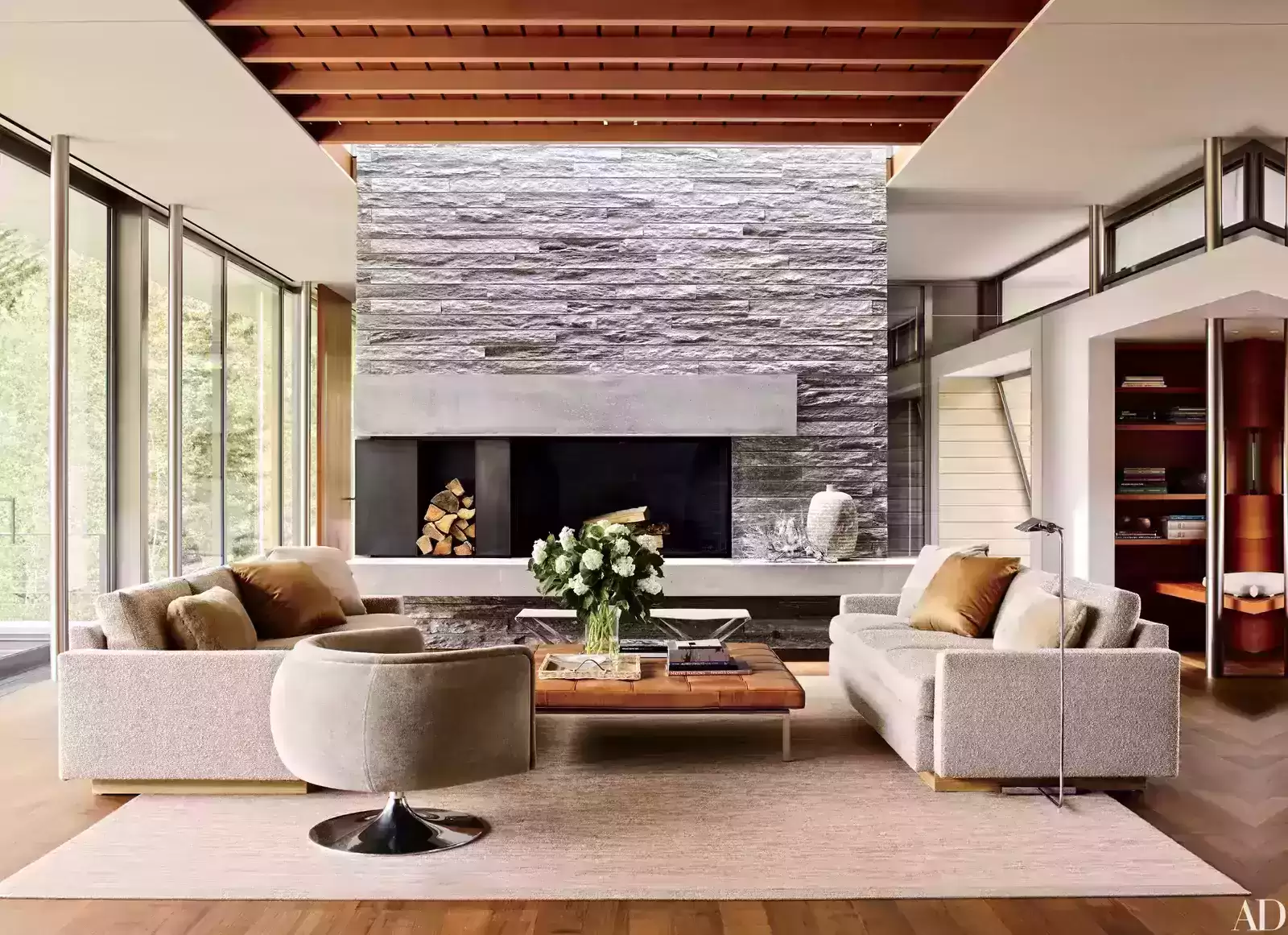There are multiple trends and styles of interior design, each with specific characteristics that make it unique and different.
However, some interior design styles are similar, such as modern and contemporary, which are often mistaken by less experienced people.
Would you like to have a modern or contemporary home?
In this article we are going to clarify the concept of modern and contemporary design, tracing back their origins and then showing the essential differences that set them apart, and the comparable details they share.

The origins of contemporary design
Contemporary style was popularized in the 1970s, and contemporary interior design was inspired by the element of modernity and postmodernism, and is strongly influenced by Art Deco, deconstruction, and futurism.
Contemporary style is constantly evolving, and therefore it does not refer to a specific historical period, but generates continuous innovation by combining the privacy of other styles in a new and bold form.
The main differences between modern and contemporary interior design
After this brief explanation of each of the interior design trends, let’s see the aesthetic and functional differences that distinguish them.
On the one hand, the contemporary style is more flexible, dynamic, and subject to change, and on the other hand, the modern style is characterized by less obvious and balanced appeal.
Let’s see the elements that distinguish them in detail:
color palette
Lines and shapes
Material
Let’s analyze them one by one.

color palette
In modern interiors, non-bright wallpapers and walls are more common, and the color palette generally consists of neutral and earthy nuances.
Such as brown, golden, rust and olive green.
Contemporary interiors, on the other hand, use several different colors, including black and white, and basic pairs with bold and bright walls.
This varies in each room and according to the desired mood.
Lines and shapes
Both styles have a linear and light design, although this aspect is expressed differently.
And when the modern style is separated from the classic or retro style, it creates a simple space with no frills, providing a fresh and familiar feel.
The clean, graceful lines of the contemporary style are also expressed with an increased interest in curved and rounded lines and shapes, rather than square features.
It is a simple design, from a conceptual point of view, although it is distinguished by its original and modern character, with innovative and customized solutions.
Materials
Modern interiors combine furniture made from natural materials, such as fine wood, leather, fabrics, plastic and metal furniture and accessories.
This solution adds some color and is also inspired by the industrial period.
On the other hand, contemporary design uses more natural materials of different types: for example, it chooses cedar wood instead of modern teak.
In some cases, it includes steel finishes or accessories, with clear overlapping details that convey sophistication and elegance.

Similarities between modern and contemporary design
Now that we’ve seen the main differences between the two methods, let’s see what they have in common:
Interiors designed to ensure an organized and comfortable atmosphere,
without sacrificing the elegance of
simple and solid furniture elements, with an artistic touch.
Both styles favor clean shapes and motifs.
The interiors are developed in an open and airy way, with just the right amount of furniture and accessories.
Behind each style lies a world of distinct details and characteristics that define their unique and unmistakable mood.
One could easily mistake the terms “modern” for “contemporary”, however,
in design and art, these two aesthetic trends become distinct styles.
But they share some common characteristics, with some differences:
time is the key to distinguishing them from each other and fully understanding their forms and concepts.
Where modern design was firmly rooted in the beginning of the 20th century,
while contemporary design is all about time now.
Maintaining humidity in homes and using appropriate materials for that









